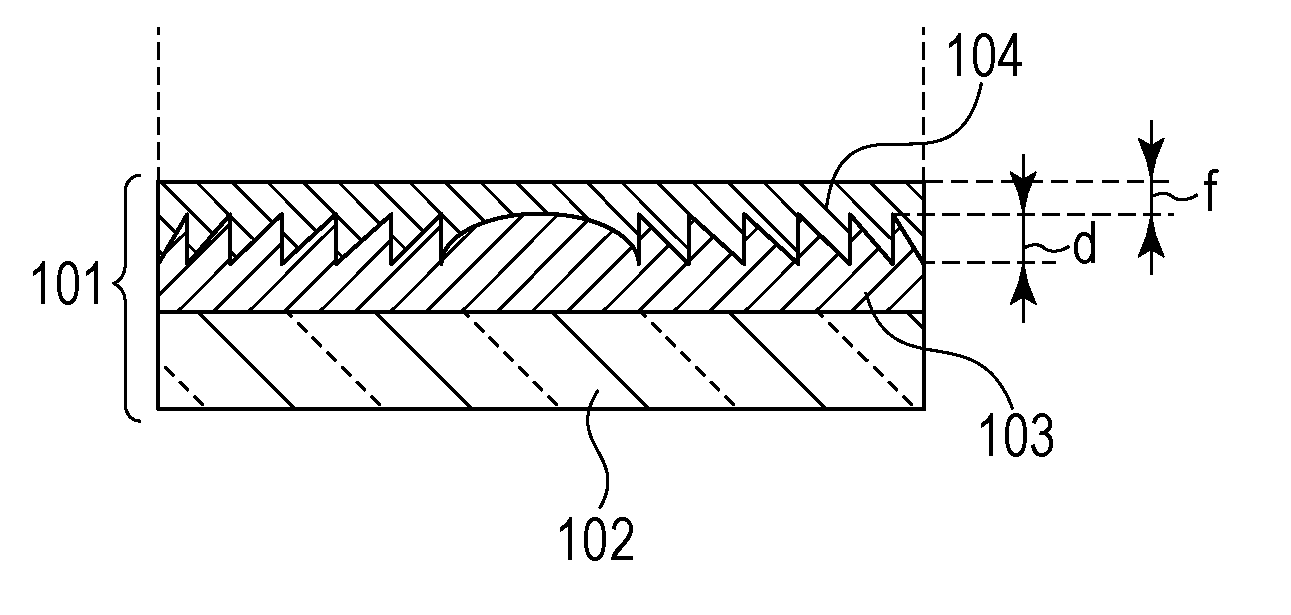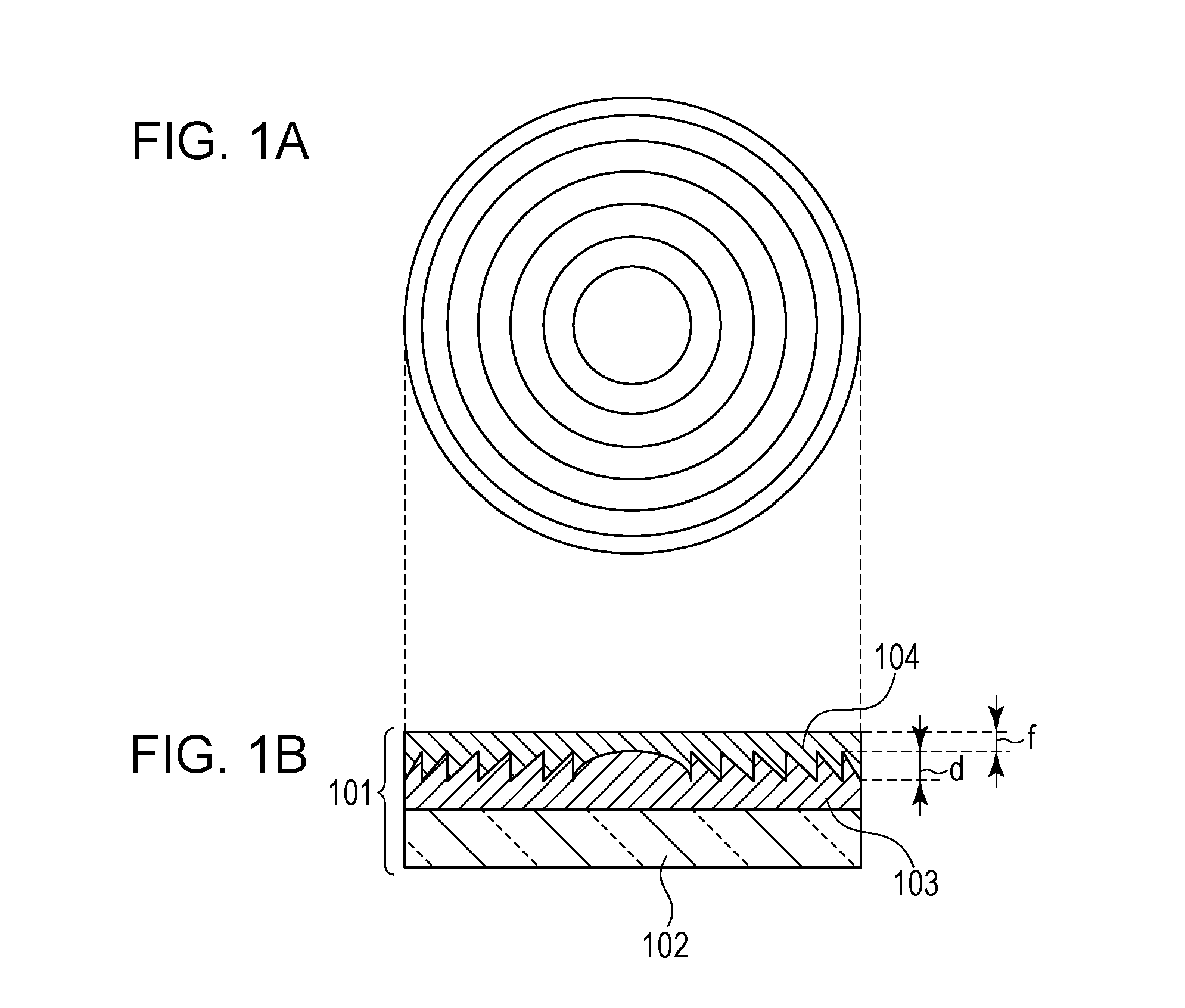Organic-inorganic composite material, optical element, and multilayer diffractive optical element
- Summary
- Abstract
- Description
- Claims
- Application Information
AI Technical Summary
Benefits of technology
Problems solved by technology
Method used
Image
Examples
example 1
[0081]An organic-inorganic composition a1 was produced as described below.
[0082]In 6,329.0 g of a xylene solvent, 142.3 g of a polycaprolactone serving as a dispersant was dissolved, followed by the addition of 709.0 g of fine particles of a transparent conductive substance, that is, fine ITO particles having an average size of 15 nm, whereby a xylene solution containing the polycaprolactone and the fine ITO particles was obtained. After being subjected to dispersion treatment in a bead mill using zirconia beads with an average size of 300 μm, the obtained xylene solution was filtered through a filter with a pore size of 100 nm, whereby slurry containing the xylene solvent and 9.87% by weight of the fine ITO particles dispersed therein was obtained.
[0083]The average size of the fine ITO particles was measured with a laser-scattering particle size distribution analyzer (ELS, manufactured by Otsuka Electronics Co., Ltd.).
[0084]Subsequently, 4.50 g of a diallyl ester of a naphthalene d...
examples 2 to 4
[0085]Organic-inorganic compositions a2 to a4 were prepared in Examples 2 to 4, respectively, in substantially the same manner as that described in Example 1 except that the amount of the blended slurry of Example 1 was 92.90 g (Example 2), 140.00 g (Example 3), or 228.70 g (Example 4).
example 5
[0086]Slurry containing the xylene solvent and 9.87% by weight of the fine ITO particles dispersed therein was obtained in the same manner as that described in Example 1.
[0087]Subsequently, 2.00 g of a diallyl ester of a naphthalene dicarboxylic acid and 8.00 g of a UV-curable resin, GRANDIC RC-C001 (produced by DIC Corporation), were added to 68.10 g of the slurry and were then dissolved therein, whereby a mixed solution was obtained. The mixed solution was set in an evaporator. The pressure in the evaporator was gradually reduced from 100 hectopascals to 3 hectopascals finally at 45° C. The xylene solvent was sufficiently removed over 20 hours, whereby an organic-inorganic composition b1 of Example 5 was prepared, the organic-inorganic composition b1 being used to form a low-refractive index, high-dispersion layer.
PUM
| Property | Measurement | Unit |
|---|---|---|
| Fraction | aaaaa | aaaaa |
| Percent by volume | aaaaa | aaaaa |
| Nanoscale particle size | aaaaa | aaaaa |
Abstract
Description
Claims
Application Information
 Login to View More
Login to View More - Generate Ideas
- Intellectual Property
- Life Sciences
- Materials
- Tech Scout
- Unparalleled Data Quality
- Higher Quality Content
- 60% Fewer Hallucinations
Browse by: Latest US Patents, China's latest patents, Technical Efficacy Thesaurus, Application Domain, Technology Topic, Popular Technical Reports.
© 2025 PatSnap. All rights reserved.Legal|Privacy policy|Modern Slavery Act Transparency Statement|Sitemap|About US| Contact US: help@patsnap.com



